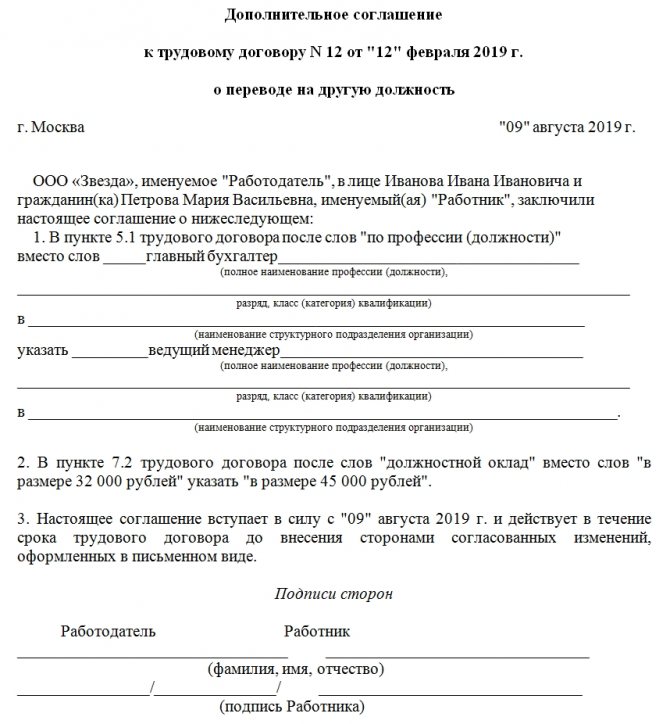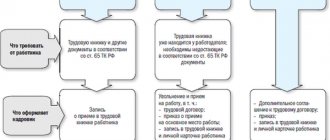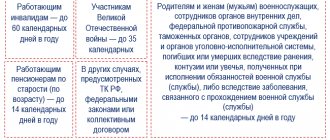An additional agreement on transfer to another position is sometimes necessary in cases where significant changes are made to the employee’s employment contract. This document serves as written evidence of the agreements reached between the employer and employee.
- Form and sample
- Free download
- Online viewing
- Expert tested
FILES
Internal movements of employees within a company are a common situation. An additional agreement must be drawn up whenever the position changes in any way, regardless of whether it is an increase or a demotion. Even if changes are made only to the job title, an additional agreement is a prerequisite for making changes.
Conditions
Article 72 of the Labor Code directly states that the employer has the right to change the position of any of the organization’s employees at its discretion. The main thing is to obtain the employee’s consent in writing at least 2 months in advance.
Such written evidence may be a statement from the employee himself, his consent, or simply a signature in a document that clearly states his consent (such a document may be a separate order of appointment).
In the notice of changes to the employment contract, the employer must also indicate the reasons why the position or other terms of the previously signed employment contract should change. The wording of these changes implies a free form of presentation, but may look like this:
- Changes are made in connection with the optimization of the organization's structure.
- Changes are made due to reductions in departments or services of the organization.
- The transfer is carried out due to the creation of new structural divisions of the company.
If a unit is opened in another city and an employee is transferred there, then his consent is required.
However, if the position is changed temporarily, for no longer than 30 days, then the employer does not need to obtain the employee’s consent 60 days before the event (in accordance with paragraph 2 of Article 72 of the Labor Code).
How to formalize a change in the terms of a TD and draw up an additional agreement?
As a rule, at an enterprise, the responsible employee of the HR department is responsible for drawing up an additional agreement to the TD. The document is drawn up according to a template available in the organization, but the form can be any, since it is not established at the legislative level. The main condition is the availability of all the necessary information.
The following information must be included in the supplement to the TD:
- name of the document and its number;
- number and date of conclusion of the TD to which the document on transfer to another position will relate;
- place and date of conclusion of the agreement;
- name of the enterprise where the employee works;
- Full name and position of the manager;
- Full name, position and passport details of the employee.
The text of the agreement indicates the points that are subject to change. In addition, it is imperative to mention which part of the employment contract remains unchanged. The agreement must indicate the date on which the document comes into force, and also indicate the fact of voluntary consent of the parties.
The wording of the text of the agreement may be different; the legislation does not establish clear requirements. For example, if the transfer occurs at the initiative of the employee, the text may be as follows: “The employee, at his own request, is transferred to the position of senior engineer from April 14, 2018. The employee’s salary is set at 40,000 (forty thousand) rubles.”
The additional agreement must be drawn up in two copies. After signing, one copy is given to the employee, and the second remains with the employer. The agreement is endorsed by both the employee and the employer.
In case of non-compliance with standards
If the employer did not warn his employee about a change in his position 2 months in advance and the changes came into force, then the employee has the right to file a complaint with the labor protection committee. If the fact of violation of rights is proven, the employer will bear administrative responsibility for violation of labor laws in the form of a fine (or will get off with a warning).
For different categories of employers, the amount of penalties will differ:
- If an official is responsible for negligence or gross violation of labor legislation, then he will be required to pay from 1 to 5 thousand rubles. fine The same prices apply to individual entrepreneurs (employers who are not legal entities).
- If the employer is an LLC, OJSC or another form of legal entity, then in case of violation he will face a fine of 30 to 50 thousand rubles. for such a violation.
Of course, in most cases, third parties are not contacted; the employer and employee find a compromise solution.
How to write a transfer order
Resolution of the State Statistics Committee of the Russian Federation dated January 5, 2004 No. 1 approved the forms of various documents, including an order to transfer an employee to another position (form T-5). The use of such forms is not mandatory. You can use another order form developed by the organization, or the sample offered for downloading at the end of the article.
The order must be prepared in case of both temporary and permanent transfer.
The following data is entered into the order for transfer to another position:
- Company name.
- Date of.
- Information about the employee - full name, timesheet number.
- The time period for which the transfer is carried out (start and end dates).
- The employee's position in which he worked before the transfer.
- Grounds for transfer (their list is given above. An example is the most common ground, such as replacing a temporarily absent employee).
- The name of the new position to which the employee is transferred.
- The amount of remuneration for the employee after the transfer.
- Data on the basis document - an additional agreement to the contract with the employee.
Thus, an order to transfer an employee can be drawn up either on a free form, taking into account the above information that must be reflected in it, or on a form in the T-5 form. At the same time, it is necessary to clearly understand the differences between translation and displacement.
Components of the additional agreement
The document consists of:
- The full name of the document with the number and date of the employment contract to which is attached. In the form and sample additional agreement available for downloading, this information is located at the top, in the middle of the sheet.
- Cities and dates of document signing.
- The name of the organization where the employee is moving.
- Full names of both acting parties. The head of the institution who is responsible for this appointment is indicated, as well as the details of the transferred employee.
- Listings of points to be changed in the employment contract. In particular, the part that concerns the job title and everything related to the transfer. These important points can be location, wages, hours of work, etc. In the paragraphs you need to write down all the text that changes, as well as what it changes to.

Particular attention should be paid to information regarding the date on which the agreement on transfer to another position is valid and when it ends.
The end date can be stated as “The duration of the employment contract until the agreed changes are made.”
Regarding the first date, we can only say that it should not be issued earlier than the document on the employee’s consent to the transfer (ideally, the consent or application for transfer should be signed two months earlier) and later than the actual transfer to another position.
Naturally, at the end of the additional agreement there should be the signatures of the parties (in the attached form, the employer is on the left, the employee is on the right) with transcripts and the seal of the organization.
Is it possible to arrange a transfer without the employee’s consent?

In practice, in almost all situations, consent is required from the employee to transfer to another position. If the employee agrees to the transfer, then the boss will not have any problems with the implementation of this procedure; the algorithm of actions will be carried out according to the general procedure.
If a person does not agree to be transferred to another structural unit/to another position, then his refusal should be recorded in writing by handing the document to the boss.
If the employee refuses, the employer will not be able to carry out the procedure alone and must look for other ways to implement it. It should be taken into account that legislative acts have developed a certain list of situations in which a subordinate does not have the right to refuse a transfer:
- In the event of an emergency, the consequences of which endanger the life and health of the population;
- During periods of production downtime caused by an economic, technical or other type of crisis;
- In situations where the employer has decided to transfer subordinates to a more modern type of technical equipment.
At the same time, the mandatory transfer of workers in the first two cases must be temporary and not exceed 30 days. The salary upon transfer should not be lower than what the employee received in his previous position.
IMPORTANT! If a worker is prohibited for health reasons from continuing to work in his current position, the employer is obliged to transfer the subordinate to another place of work permitted by medical indications, but only with the consent of the employee.
In case of refusal of the transfer, the head of the company will only have to terminate the employment contract with the subordinate.
Alexey Pavlov
Lawyer, ready to answer your questions.
If you encounter difficulties related to transfer to another position, or your rights are violated, you should contact our professional lawyers by phone or through an online consultant.
They free advice on all issues.
Internal transfers: done correctly
In some cases, labor legislation allows the dismissal of employees only when it is impossible to transfer them to another job available to the employer, which the citizen can perform taking into account his state of health. We are talking here about both vacant positions or work corresponding to the qualifications of the employee, as well as vacant lower positions or lower paid work. In this case, the consent of the employee must be obtained. Please note that the employer is obliged to offer the employee all vacancies available in the given area that meet the specified requirements. An employer is obliged to offer vacancies in other localities only if this is provided for by a collective agreement, agreements, or employment contract (Articles 81, 83 and 84 of the Labor Code of the Russian Federation). We are talking about dismissal of employees in the following cases:
- reduction of the number or staff of employees of an organization, individual entrepreneur (clause 2 of Article 81 of the Labor Code of the Russian Federation);
- inconsistency of the employee with the position held or the work performed due to insufficient qualifications confirmed by certification results (clause 3 of Article 81 of the Labor Code of the Russian Federation);
- reinstatement at work of an employee who previously performed this work, by decision of the state labor inspectorate or court (clause 2 of article 83 of the Labor Code of the Russian Federation);
- disqualification or other administrative punishment that excludes the possibility of the employee fulfilling his duties under the employment contract (Clause 8 of Article 83 of the Labor Code of the Russian Federation);
- expiration, suspension for a period of more than two months or deprivation of an employee of a special right (license, right to drive a vehicle, the right to carry a weapon, other special right) in accordance with the law, if this entails the impossibility of the employee fulfilling his duties under the employment contract ( clause 9 of article 83 of the Labor Code of the Russian Federation);
- termination of access to state secrets if the work performed requires such access (clause 10 of Article 83 of the Labor Code of the Russian Federation);
- violation of the rules established by law for concluding an employment contract, if this violation was not the fault of the employee and excludes the possibility of continuing work (clause 11 of article 77 of the Labor Code of the Russian Federation).
We also remind you that an employee who needs to be transferred to another job in accordance with a medical report, with his written consent, the employer is obliged to transfer to another available job that is not contraindicated for this citizen due to health reasons. Meanwhile, if the specified person needs a temporary transfer for a period of up to four months, refuses the transfer, or the corresponding job is not available, then the employer must suspend the employee from work for this period while maintaining the place of work (position). However, during the period of suspension, the employee’s wages are not accrued. At the same time, if an employee needs a temporary transfer for a period of more than four months or a permanent transfer, then if he refuses the transfer or the employer does not have the appropriate work, the employment contract is terminated in accordance with paragraph 8 of part one of Article 77 of the Labor Code of the Russian Federation (Article 73 Labor Code of the Russian Federation).
As a rule, in all of the above cases, the employer sends the employee a corresponding notice or proposal to transfer the employee to his existing vacant positions (see Example 6).









